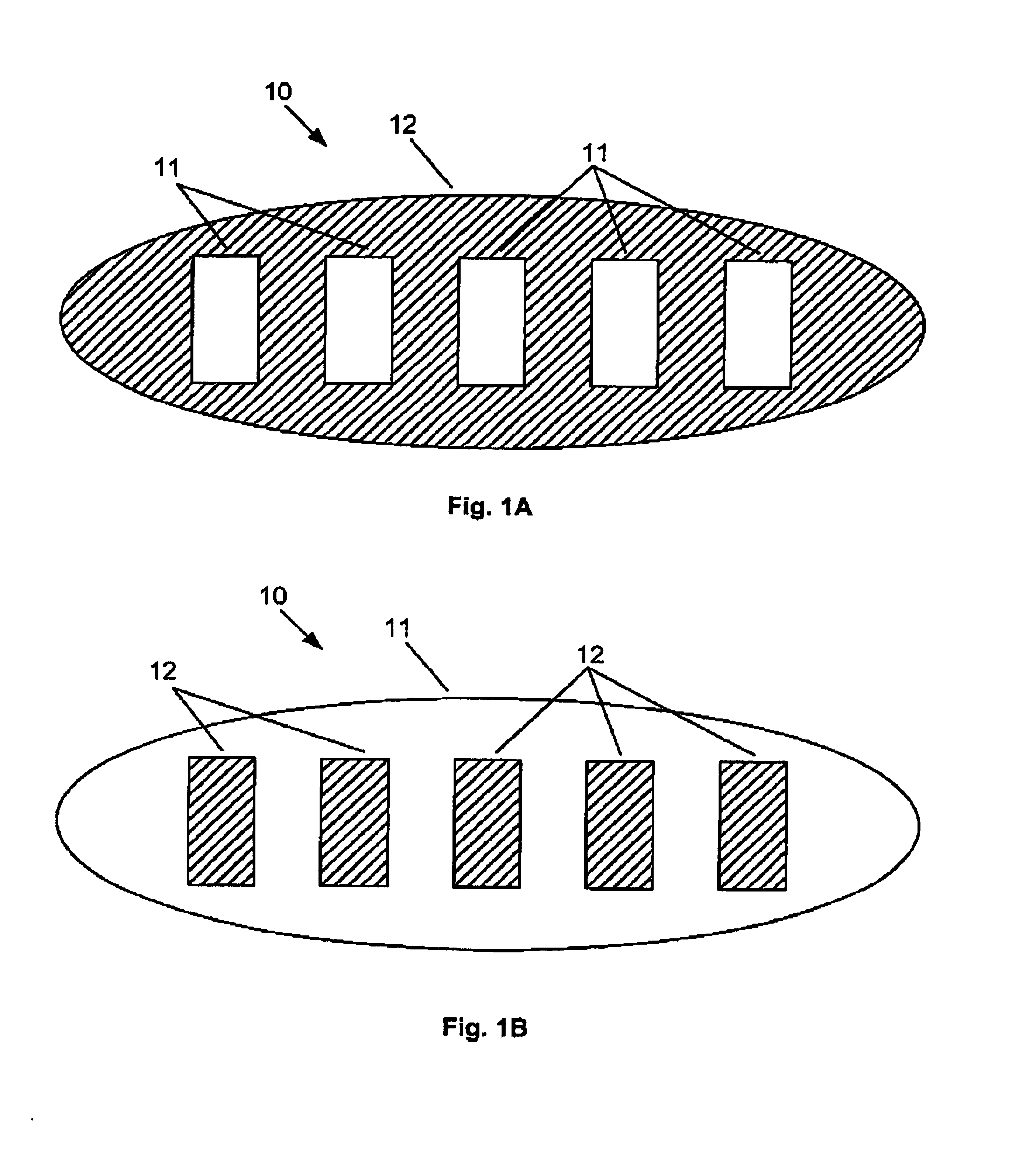Dual strain-state SiGe layers for microelectronics
a technology of microelectronics and strain-state layers, applied in the field of strain-state sige layers for microelectronics, can solve the problems of increasing complexity of technology, increasing the difficulty of ensuring carrier mobility in devices, and increasing the cost of devices, so as to achieve poor thermal conductivity, dissipate heat, and improve the effect of circuit performan
- Summary
- Abstract
- Description
- Claims
- Application Information
AI Technical Summary
Benefits of technology
Problems solved by technology
Method used
Image
Examples
Embodiment Construction
[0054]FIG. 1 shows a top view of crystalline layers 10 having a tensilely strained SiGe portion and a compressively strained SiGe portion. FIG. 1A shows an embodiment, 10, where the compressively strained SiGe portion 11 occupies essentially a plurality of island regions in a tensilely strained SiGe portion 12. This configuration is typically the result of the fabrication method where a uniformly deposited tensilely strained SiGe is opened up and the compressively strained SiGe is then grown in the openings. FIG. 1B shows an alternate preferred embodiment of the strained crystalline layer 10 where the tensilely strained SiGe portion 12 occupies essentially a plurality of island regions in a compressively strained SiGe portion 11. The configuration of FIG. 1B is typically the result of the fabrication method where a uniformly deposited compressively strained SiGe is opened up and the tensilely strained SiGe is then grown in the openings. It is always true that the compressively strai...
PUM
 Login to View More
Login to View More Abstract
Description
Claims
Application Information
 Login to View More
Login to View More - R&D
- Intellectual Property
- Life Sciences
- Materials
- Tech Scout
- Unparalleled Data Quality
- Higher Quality Content
- 60% Fewer Hallucinations
Browse by: Latest US Patents, China's latest patents, Technical Efficacy Thesaurus, Application Domain, Technology Topic, Popular Technical Reports.
© 2025 PatSnap. All rights reserved.Legal|Privacy policy|Modern Slavery Act Transparency Statement|Sitemap|About US| Contact US: help@patsnap.com



